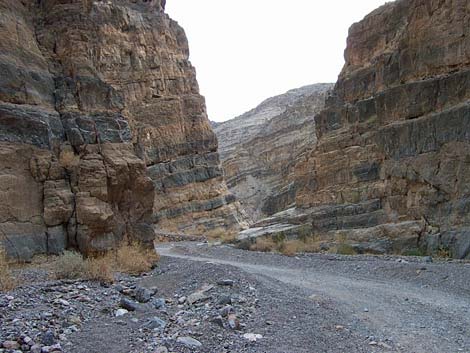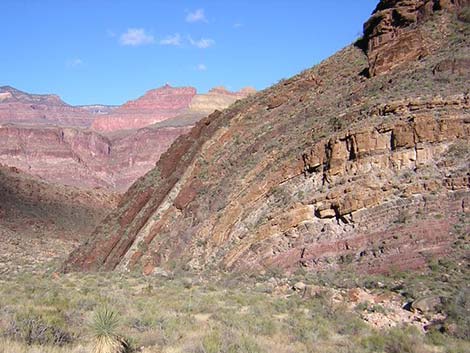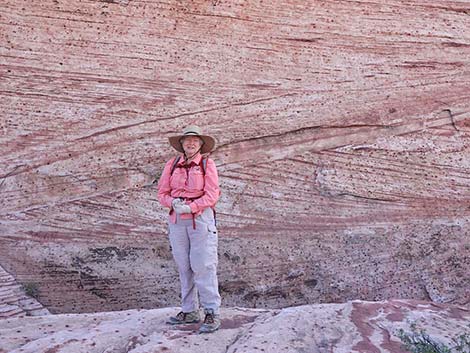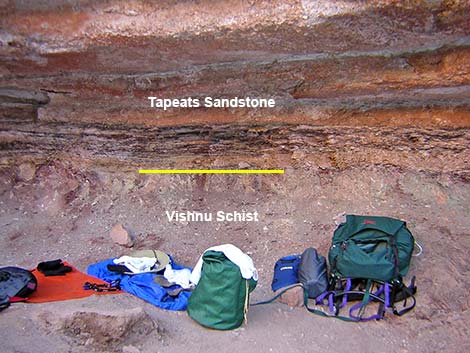
Bedding, Strata, Cross-bedding, and Unconformities
 |
Bedding. Layers of sedimentary rock that show different grain sizes or compositions. Bedding indicates successive depositional events. Strata; Stratification. The structure of sedimentary rocks where parallel beds of considerable lateral extent can be seen. Photo: Horizontal layers in Titus Canyon, Death Valley National Park. |
 |
Strata sometime are bent in odd ways by tectonic forces after they are laid down. Photo: Bent layers of Precambrian rock in Bass Canyon, Grand Canyon National Park. |
 |
Cross-bedding. A characteristic of sedimentary rocks where different layers are laid down at angles to one another, that is, not all are laid horizontally. Sandstone formed from sand dunes, which is the case at Red Rocks, often shows cross-bedding. As shifting winds move sand around, they create and destroy layers of sand. As dunes move about, some layers are left from the sides of dunes while others are left from the dune tops or dune swales. The result, solidified into sandstone, reveals thin bed at angles to one another. Photo: Calico Hills, Red Rock Canyon National Conservation Area. |
 |
Unconformity. A line between layered strata of different ages representing an interval of time in which deposition stopped, erosion removed some material, and then deposition resumed. A period of time missing from the geologic record. Photo: Boucher Canyon, Grand Canyon National Park. The Great Unconformity is a gap of more than 1 billion years between the lower layer of 1.7-billion-year-old Vishnu Schist (Precambrian rock) and the upper layer of 0.57-billion-year-old Tapeats Sandstone (Paleozoic rock). Over 1 billion years of the geologic record are missing at this point; that is, the Vishnu Schist eroded for over 1 billion years before the sea rose and deposited beach sand that later became the Tapeats Sandstone. |
Happy hiking! All distances, elevations, and other facts are approximate.
![]() ; Last updated 240323
; Last updated 240323
| Main Glossary | Hiking Around Las Vegas | Copyright, Conditions, Disclaimer | Home |